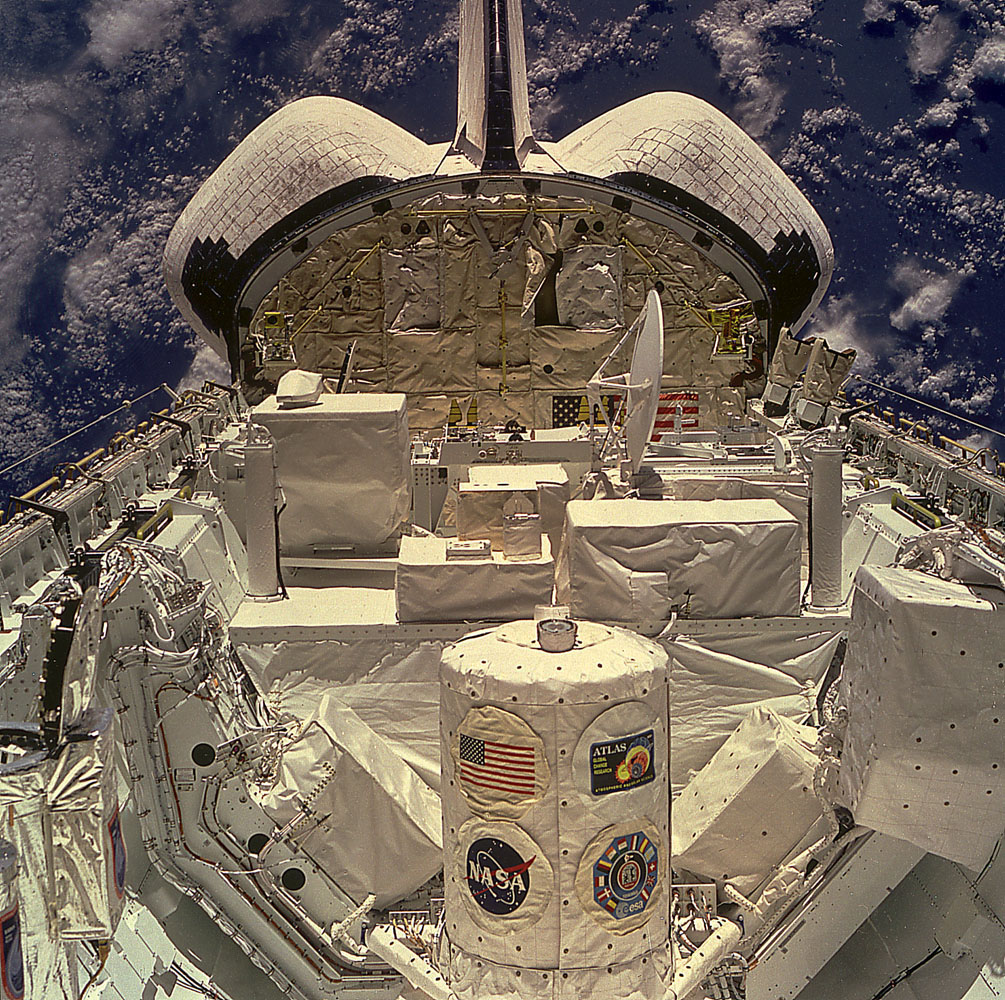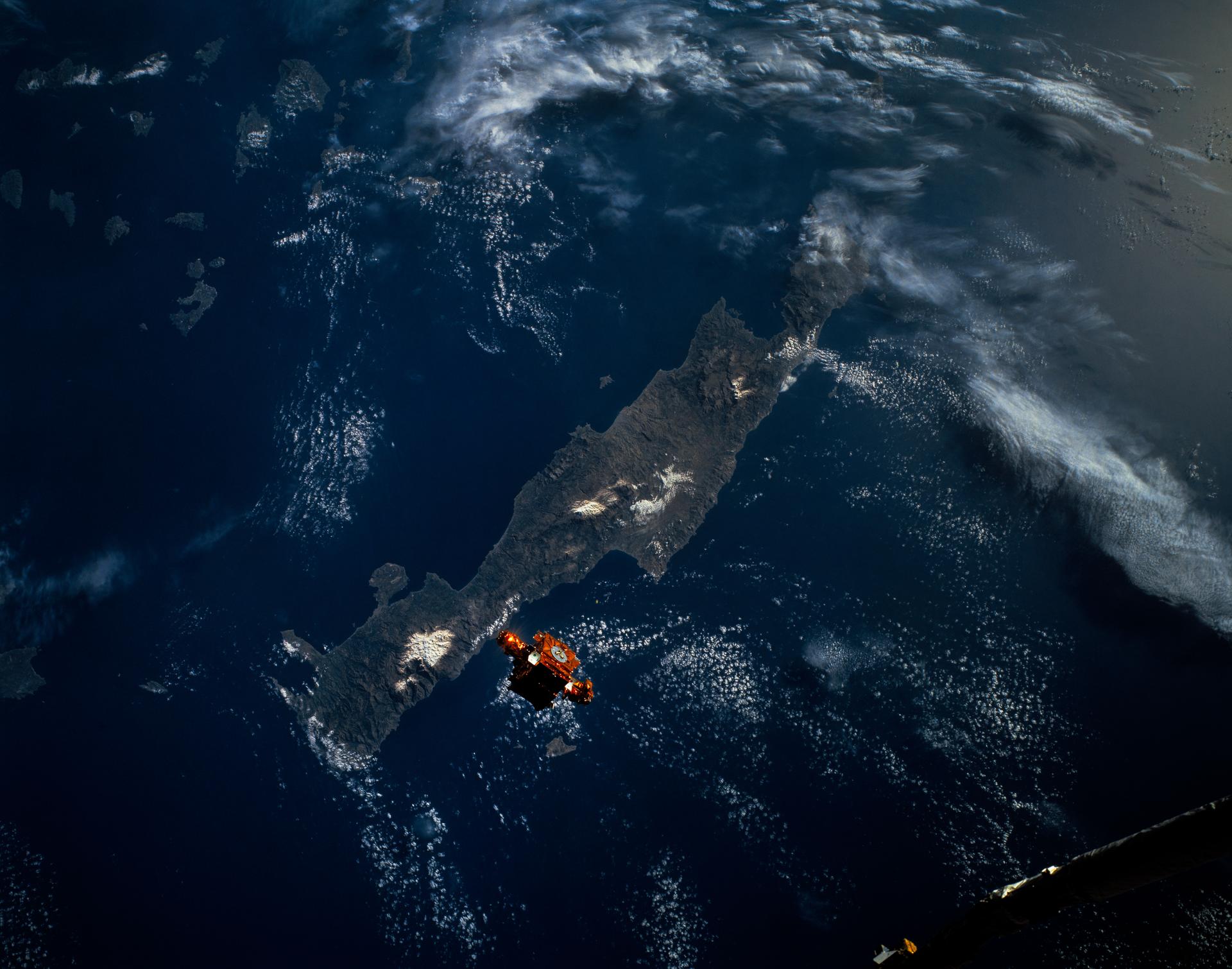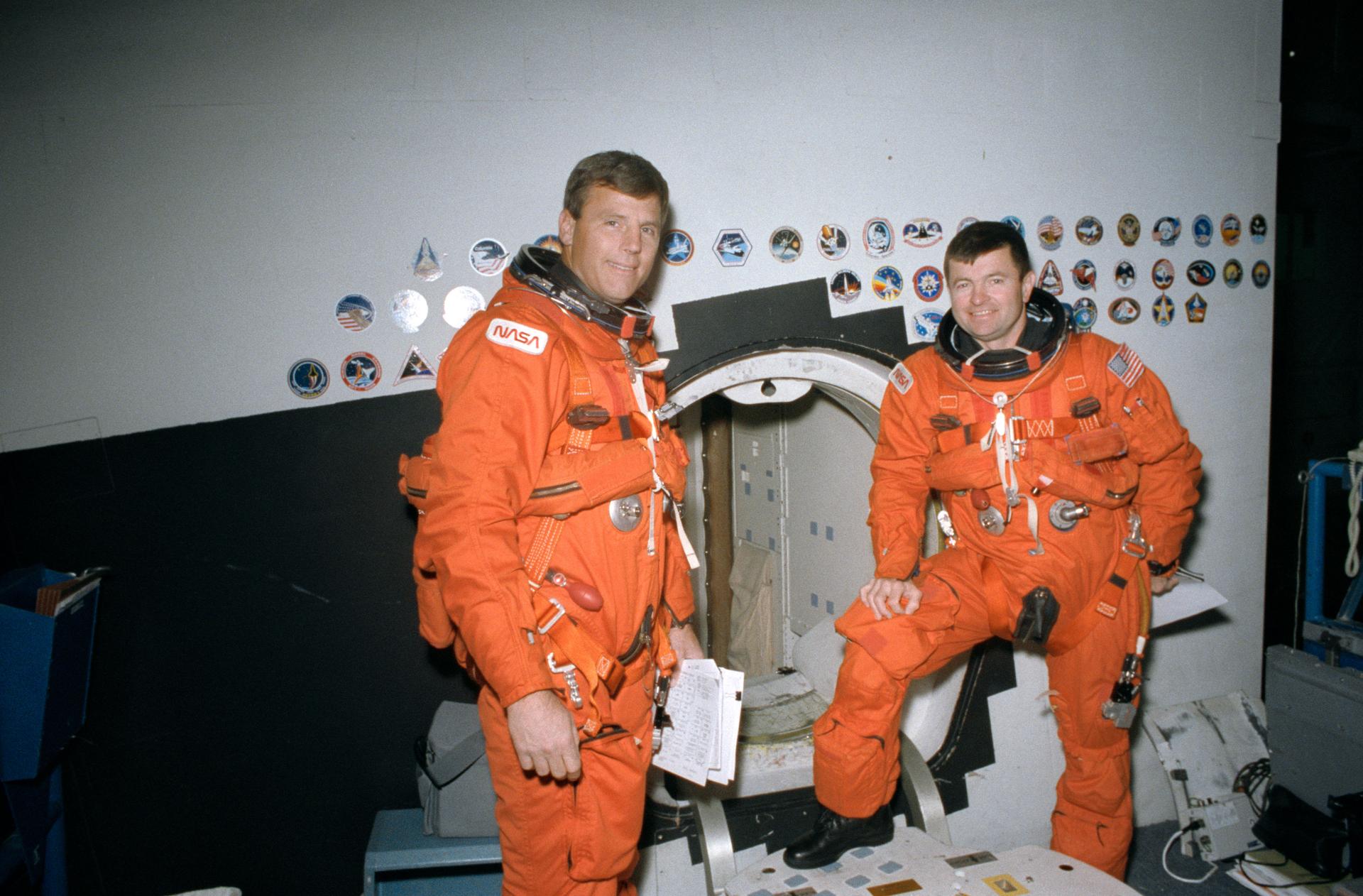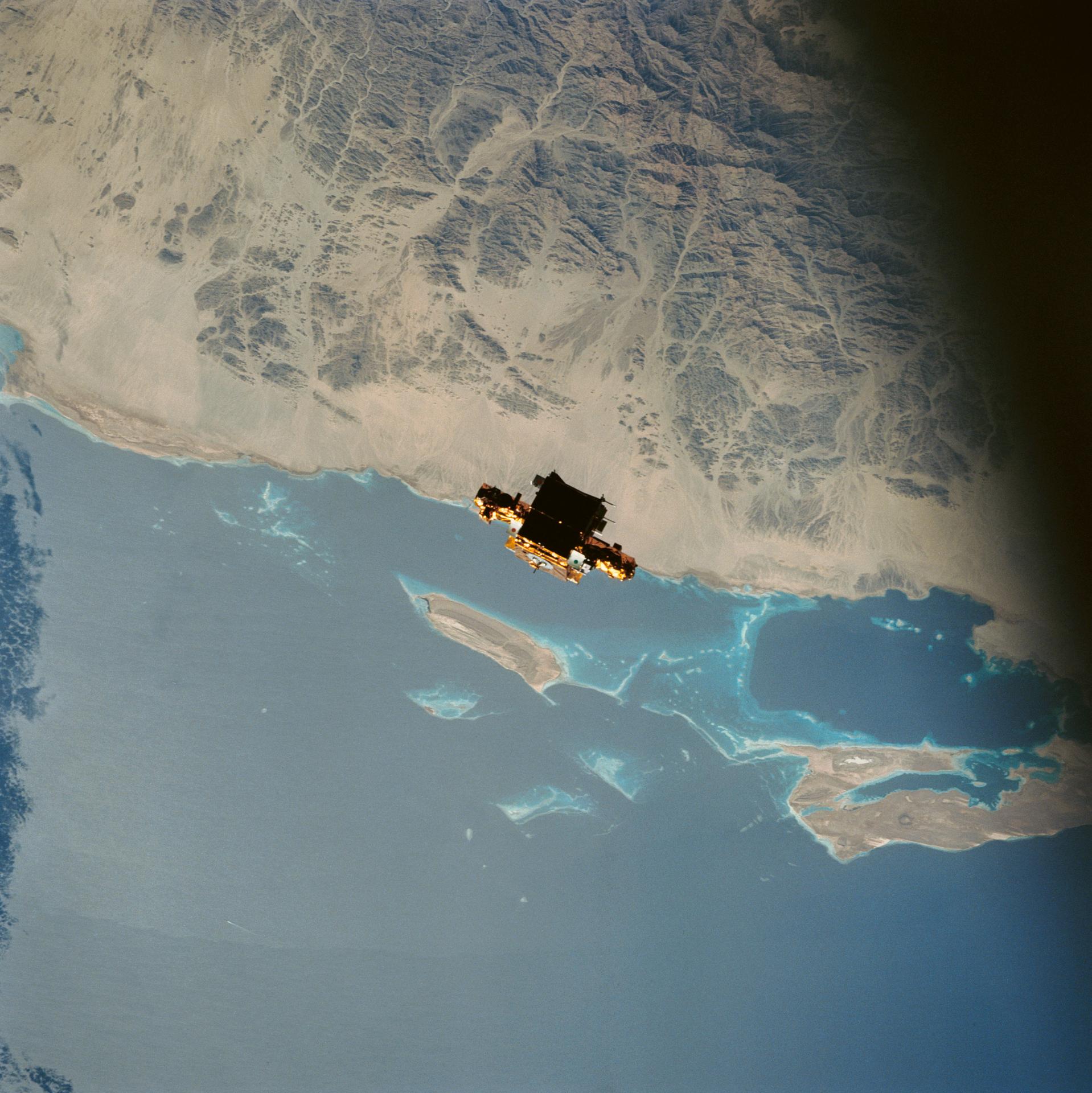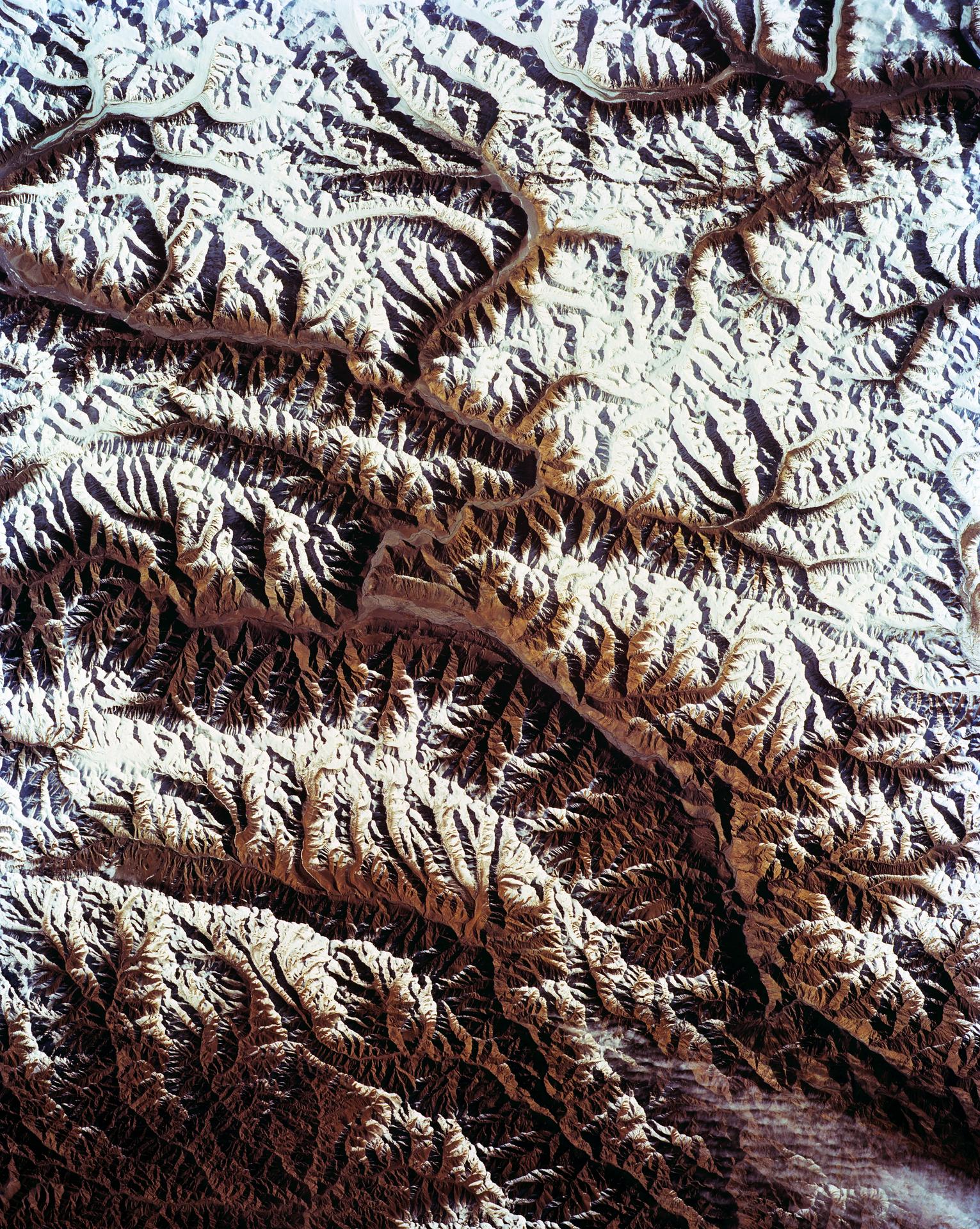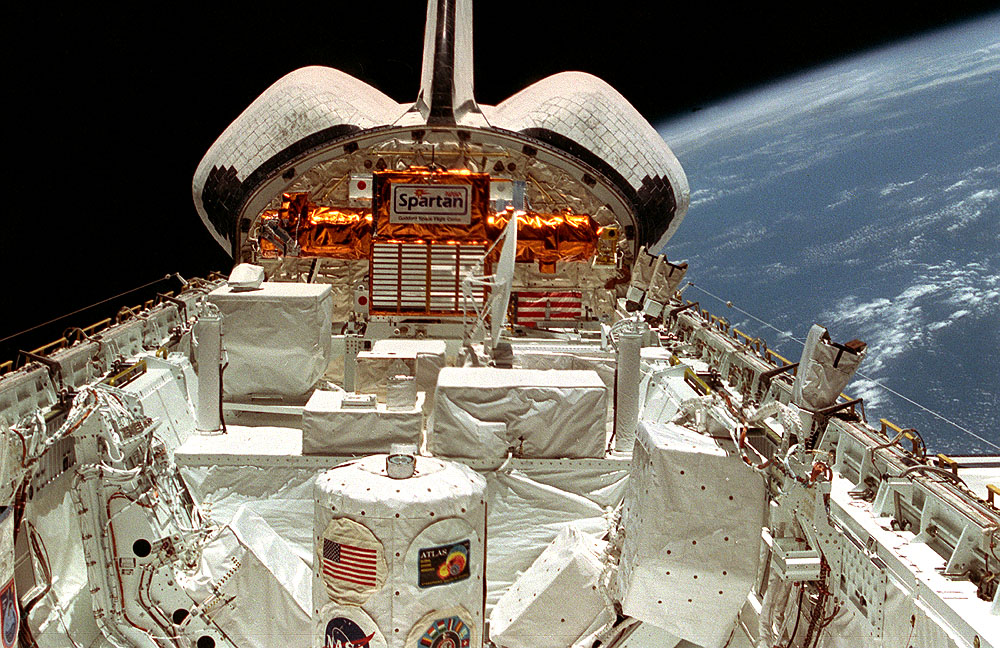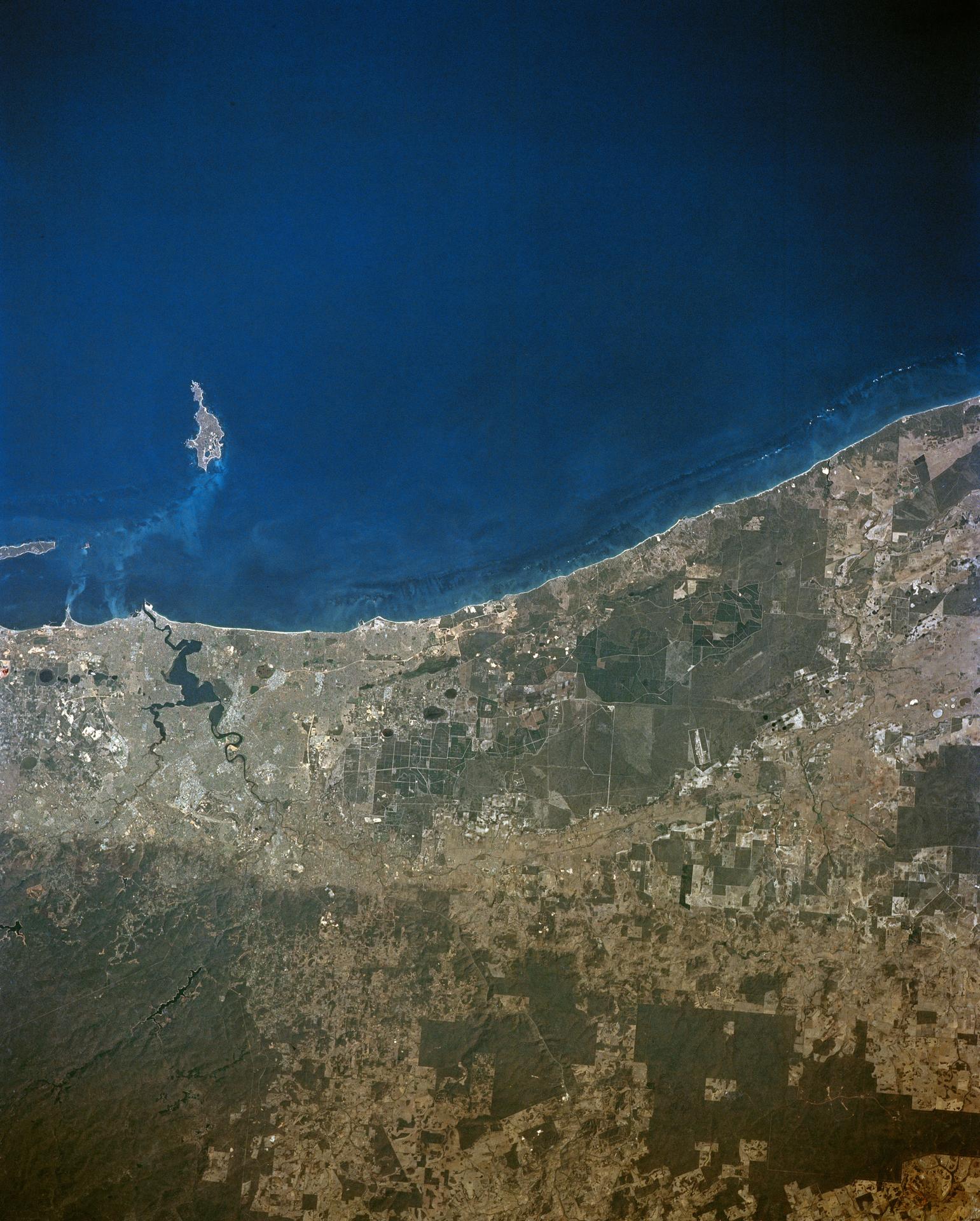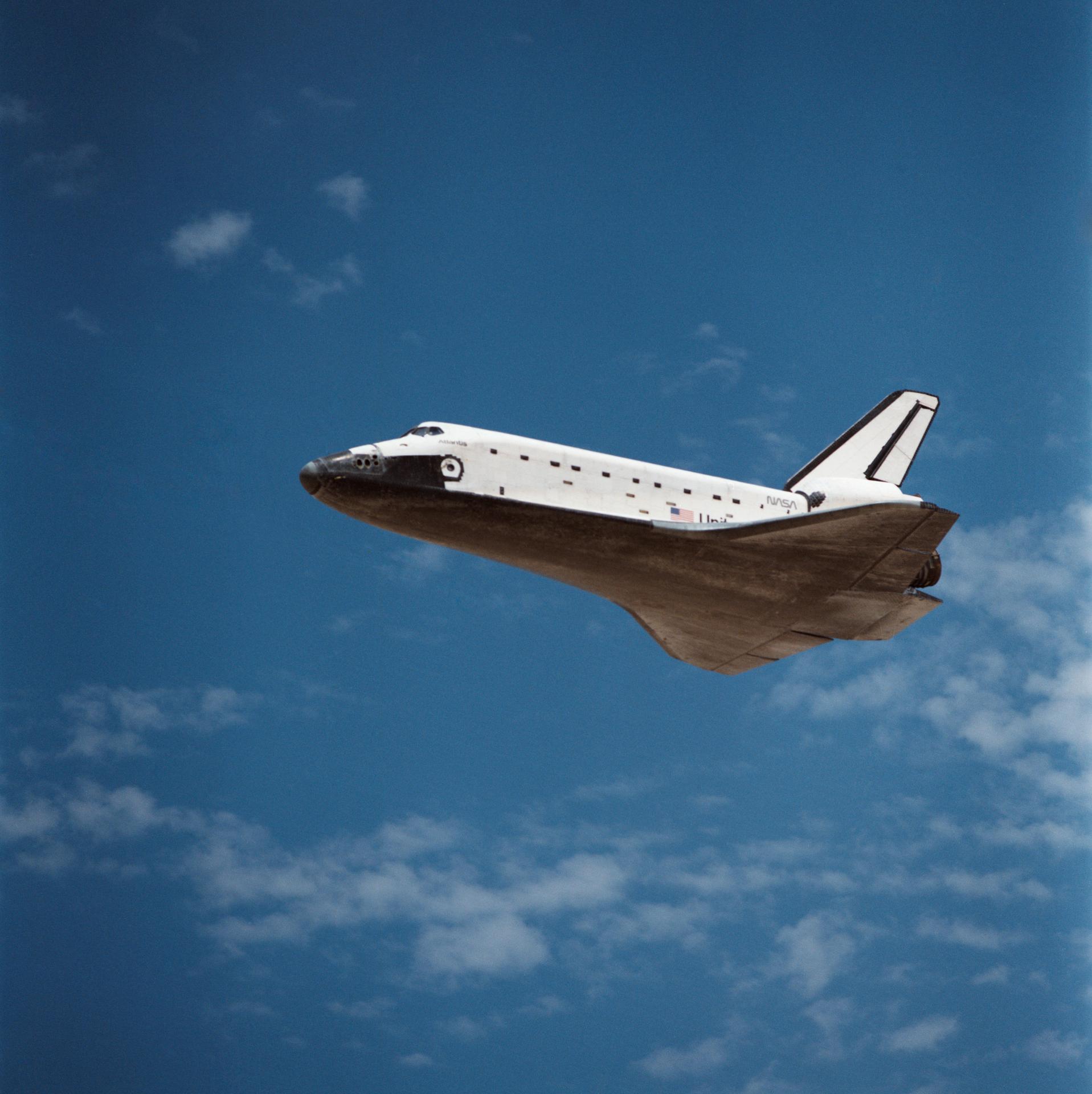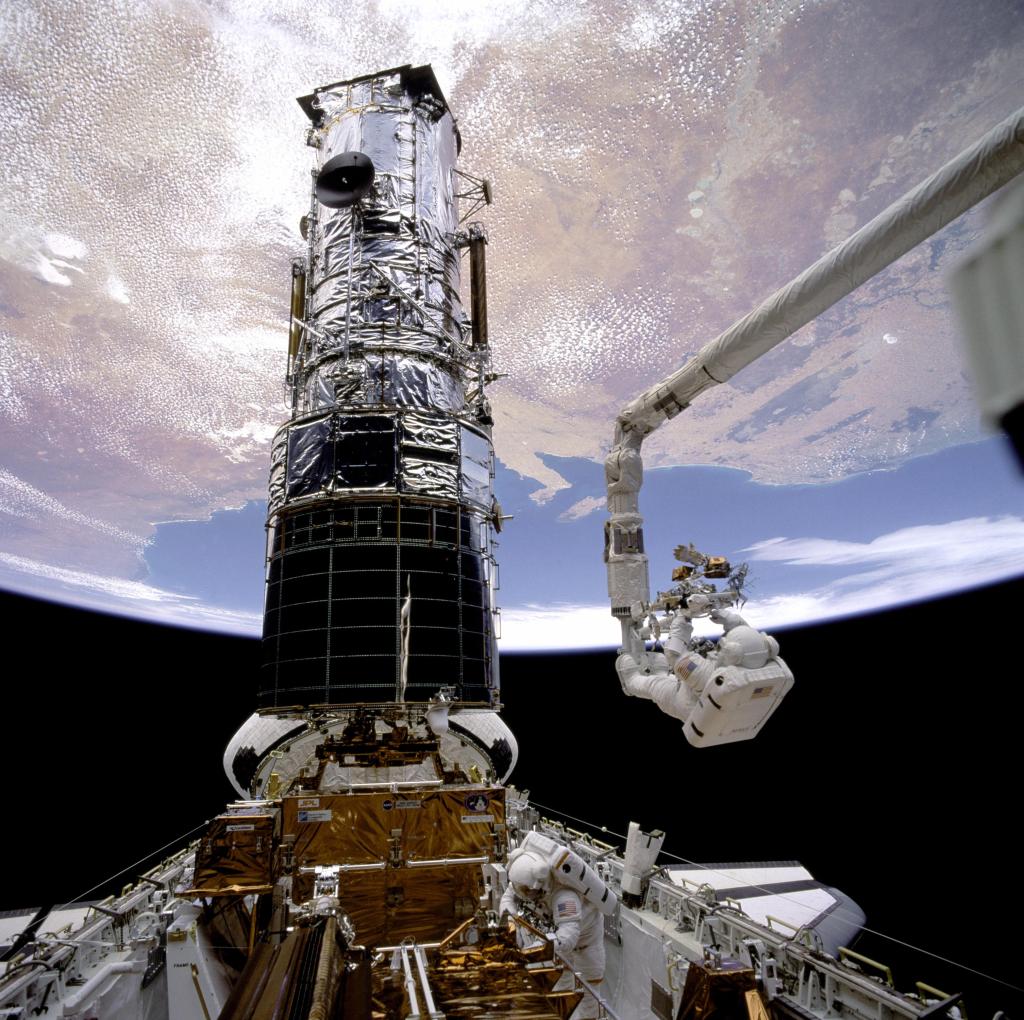
STS-56
The primary payload of the flight was the Atmospheric Laboratory for Applications and Science-2 (ATLAS-2).
orbiter
mission duration
Launch
Landing
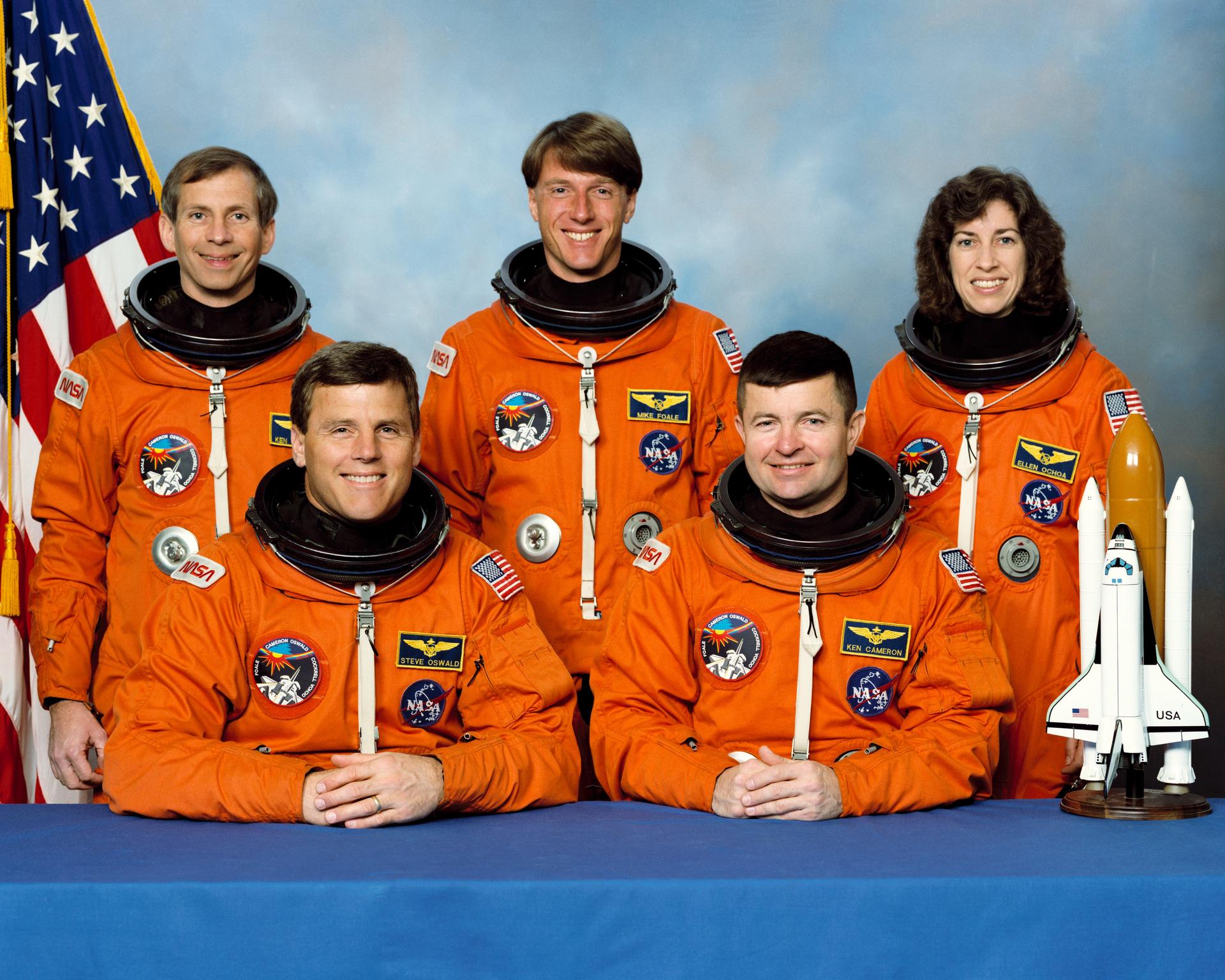
STS-56 Mission Facts
Mission: ATLAS-2; SPARTAN-201
Space Shuttle: Discovery
Launch Pad: 39B
Launch Weight: 236,659 pounds
Launched: April 8, 1993, 1:29:00 a.m. EDT
Landing Site: Kennedy Space Center, Florida
Landing: April 17, 1993, 7:37:24 a.m. EDT
Landing Weight: 206,855 pounds
Runway: 33
Rollout Distance: 9,530 feet
Rollout Time: 63 seconds
Revolution: 148
Mission Duration: 9 days, 6 hours, 8 minutes, 24 seconds
Orbit Altitude: 160 nautical miles
Orbit Inclination: 57 degrees
Miles Traveled: 3.9 million
Crew
Kenneth D. Cameron, Commander
Stephen S. Oswald, Pilot
C. Michael Foale, Mission Specialist
Kenneth D. Cockrell, Mission Specialist
Ellen Ochoa, Mission Specialist
Launch Highlights
First launch attempt on April 6 was halted at T-11 seconds by orbiter’s computers when instrumentation on the liquid hydrogen high point bleed valve in main propulsion system indicated off instead of on. Later analysis indicated valve was properly configured; 48-hour scrub turnaround procedures implemented. Final countdown on April 8 proceeded smoothly.
Mission Highlights
The primary payload of the flight was the Atmospheric Laboratory for Applications and Science-2 (ATLAS-2), designed to collect data on relationship between sun’s energy output and Earth’s middle atmosphere and how these factors affect ozone layer. Included six instruments mounted on Spacelab pallet in cargo bay, with seventh mounted on wall of bay in two Get Away Special canisters. Atmospheric instruments were Atmospheric Trace Molecule Spectroscopy (ATMOS) experiment; Millimeter Wave Atmospheric Sounder (MAS); and Shuttle Solar Backscatter Ultraviolet/A (SSBUV/A) spectrometer (on cargo bay wall). Solar science instruments were Solar Spectrum Measurement (SOLSPEC) instrument; Solar Ultraviolet Irradiance Monitor (SUSIM); and Active Cavity Radiometer (ACR) and Solar Constant (SOLCON) experiments.
ATLAS-2 is one element of NASA’s Mission to Planet Earth program. All seven ATLAS-2 instruments first flew on ATLAS-I during STS-45, and will fly a third time in late 1994.
On April 11, crew used remote manipulator arm to deploy Shuttle Point Autonomous Research Tool for Astronomy-201 (SPARTAN-201), a free-flying science instrument platform designed to study velocity and acceleration of solar wind and observe sun’s corona. Collected data was stored on tape for playback after return to Earth. SPARTAN-201 retrieved on April 13.
Crew also made numerous radio contacts to schools around world using Shuttle Amateur Radio Experiment II (SAREX II), including a brief radio contact with Russian Mir space station, first such contact between Shuttle and Mir using amateur radio equipment.
Other cargo bay payloads: Solar Ultraviolet Experiment (SUVE), sponsored by Colorado Space Grant Consortium, and located in Get Away Special canister on cargo bay wall.
Middeck payloads: Commercial Materials Dispersion Apparatus Instrumentation Technology Associates Experiment (CMIX); Physiological and Anatomical Rodent Experiment (PARE); Space Tissue Loss (STL-1); Cosmic Ray Effects and Activation Monitor (CREAM) experiment; Hand-held, Earth-oriented, Real-time, Cooperative, User-friendly, Location-targeting and Environmental System (HERCULES); Radiation Monitoring Equipment III (RE III); and Air Force Maui Optical Site (AMOS) calibration test.
STS-56
Shuttle News
Retired Space Shuttle Locations
Shuttle Atlantis – Kennedy Space Center Visitor Complex Shuttle Discovery – Steven F. Udvar-Hazy Center Shuttle Endeavour – California Science…
Read the Story




























